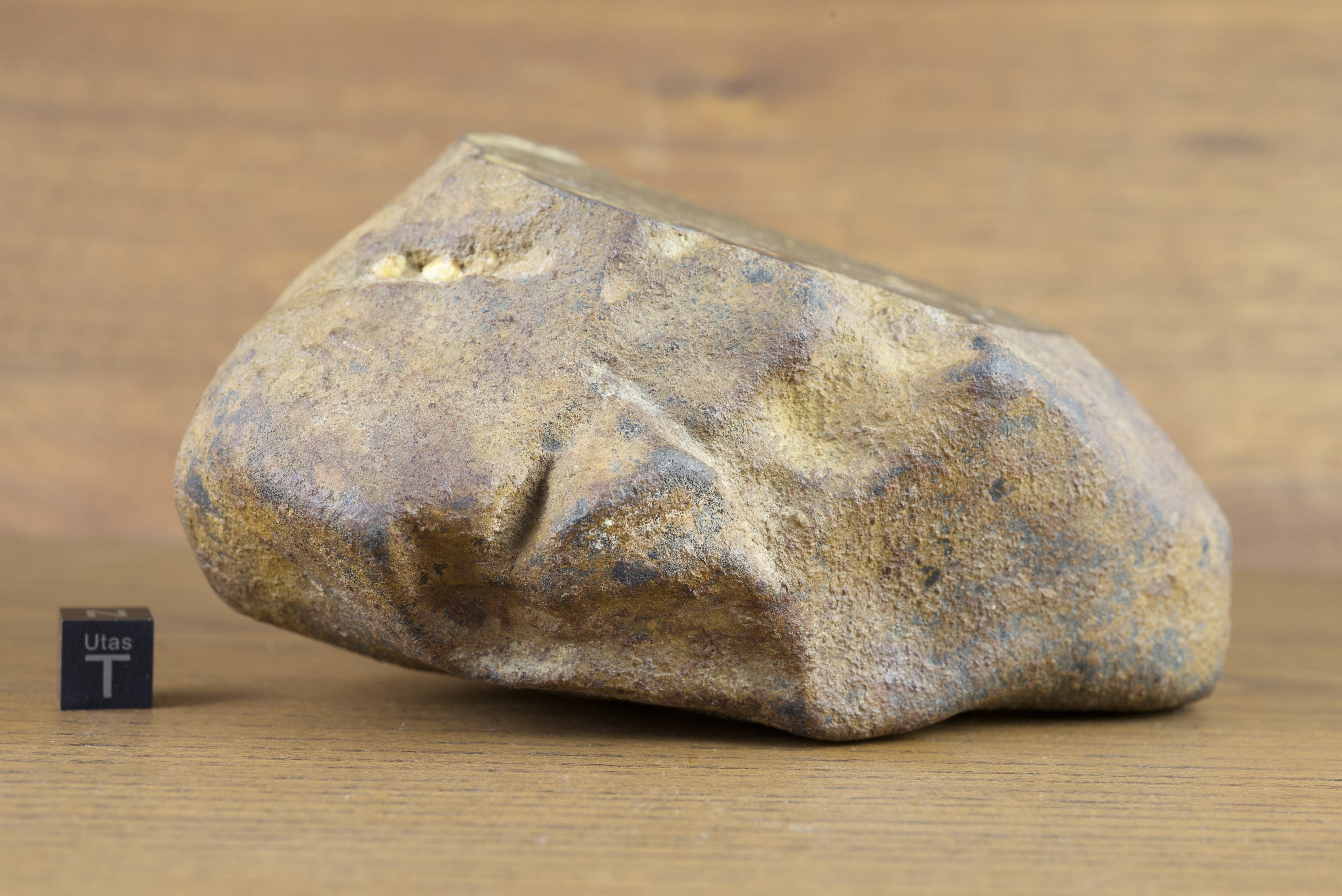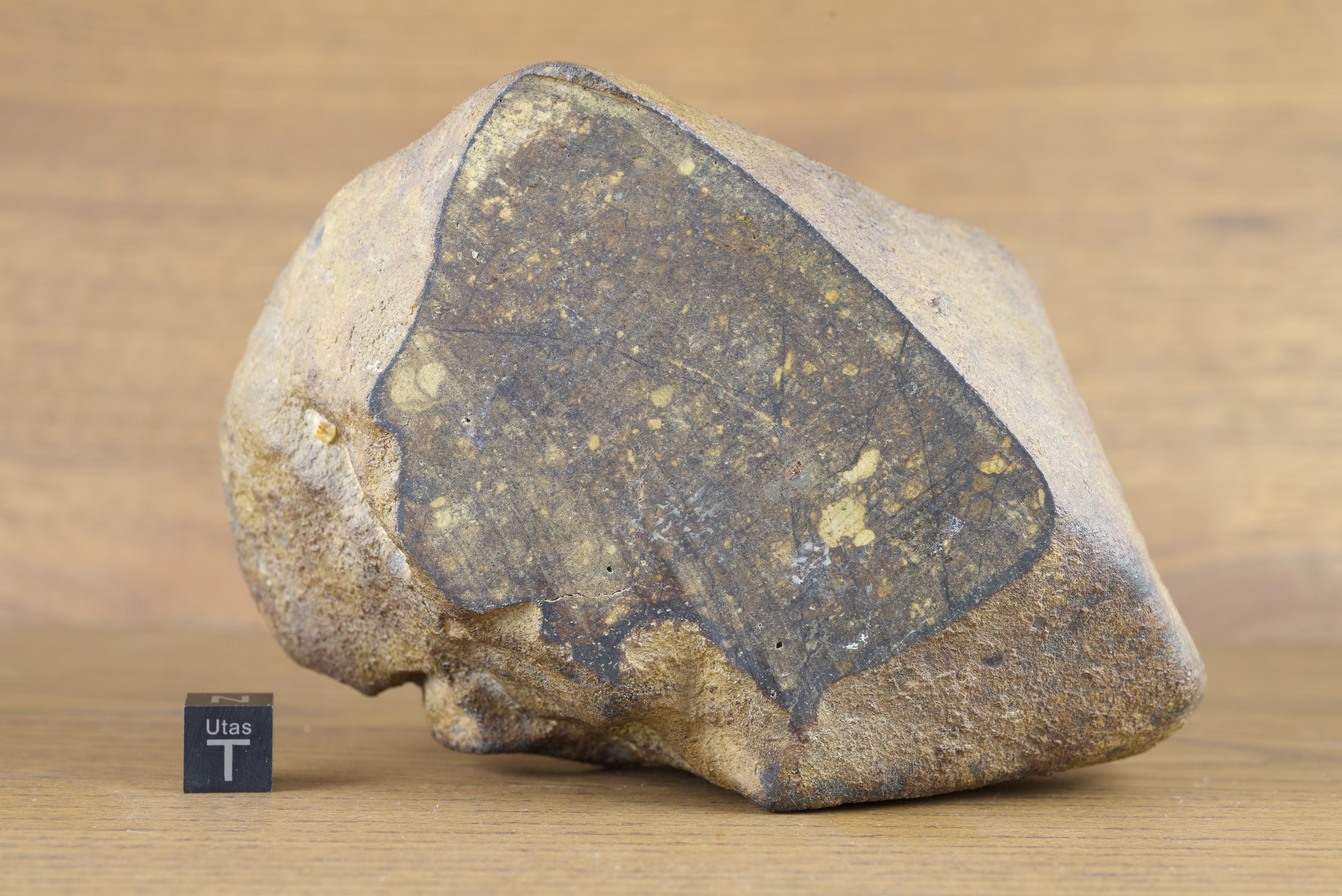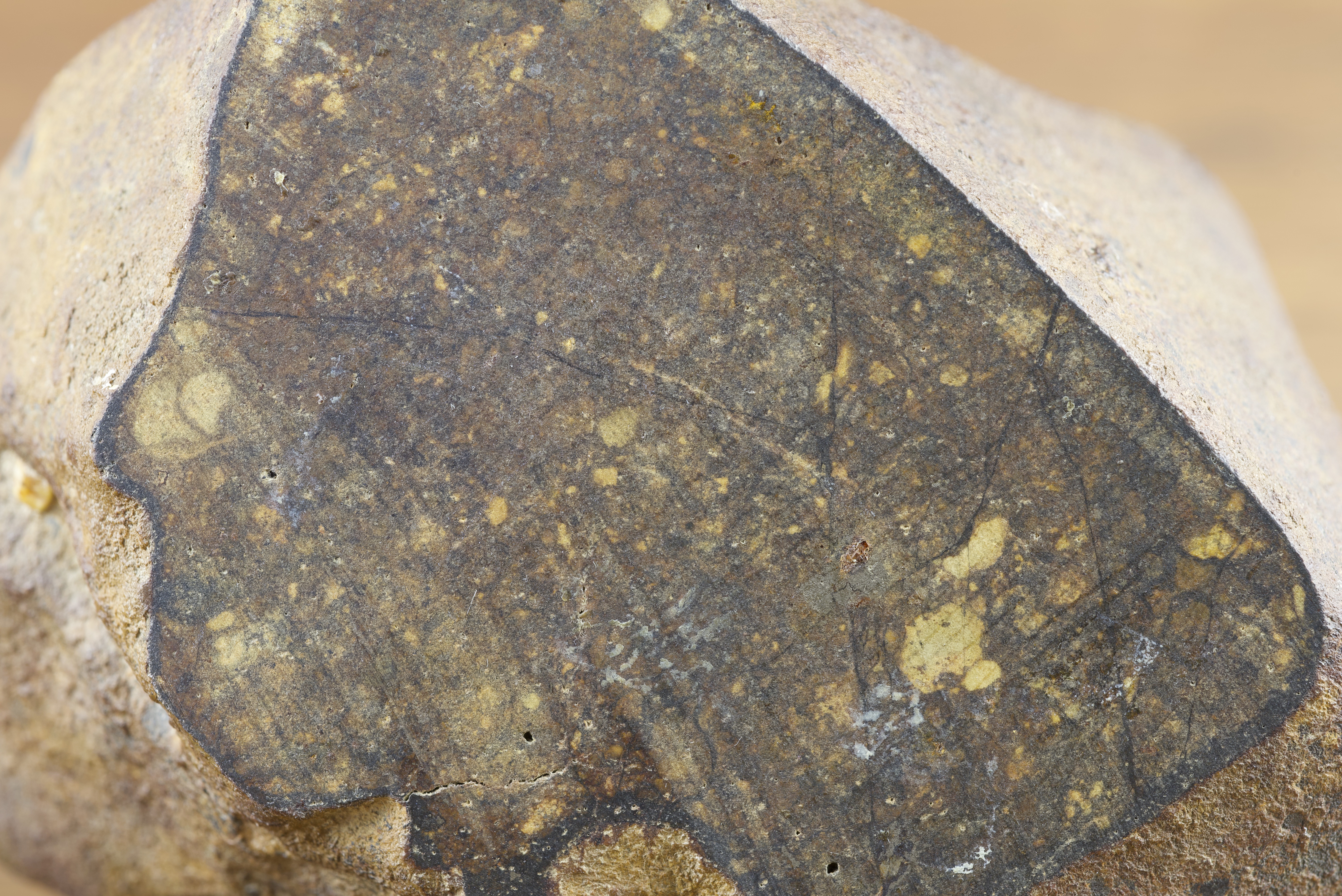Tenham, L6
Tenham was a spectacular meteorite fall that occurred in a remote and sparsely populated area of Queensland in 1879. From the Queensland Times, August 1911:

However, news of the fall almost died with local eyewitnesses. A full account and description of the fall was finally published by L. J. Spencer in 1937, almost 60 years after the stones fell: The Tenham (Queensland) meteoritic shower of 1879. Spencer clarified that the total weight of recovered stones was closer to 100-200 kg, and the largest individual stone recovered appears to have weighed approximately 30 kg.
Because Tenham was such a large fall, and so much of it was available for study, a great deal of analytical work was performed on samples over the ensuing century. Despite being an L6, the most common type of meteorite, several new minerals have been recognized in it: ringwoodite, bridgmanite, akimotoite, and poirierite.
1.1 kilogram windowed individual, formerly in the collection of The Organization for the Proliferation of Space Studies



